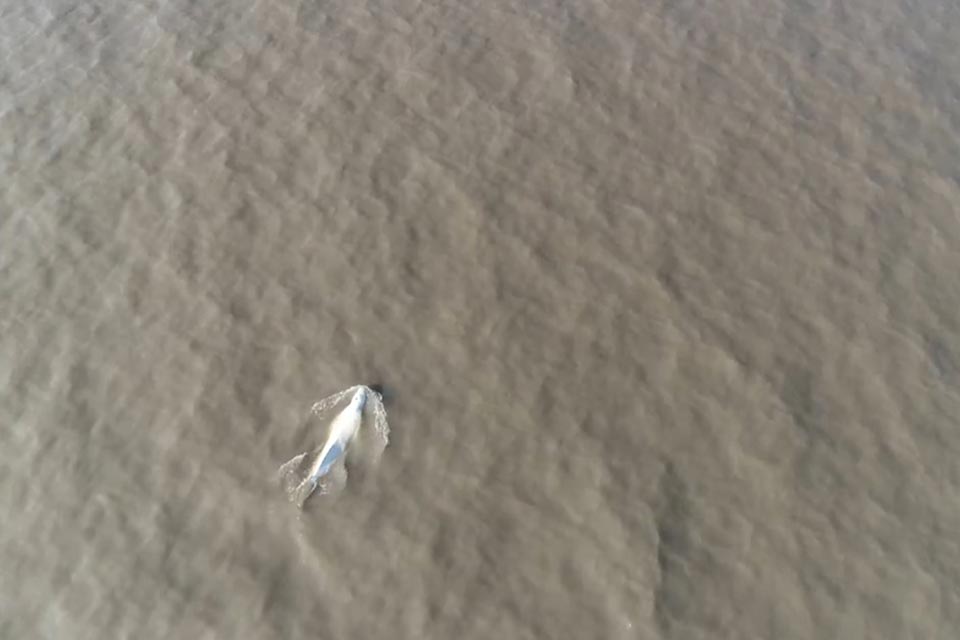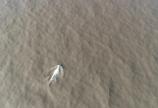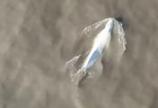Belugas turn tail from ship noise
- Alf Wilson

UVic researchers document ships nearly 80km away disrupting beluga behaviour
Beluga whales face many threats, including increasing underwater noise pollution from ship traffic—and new research shows that increasing ship traffic in the Arctic Ocean could have enormous impact on the species. In a recently published paper, UVic biology postdoctoral researcher Morgan Martin details how the behaviour of nine satellite-tagged Pacific-Arctic belugas changed due to ship encounters—sometimes at extreme distances of nearly 80km.
The surface movements and diving maneuvers of individual belugas was examined, revealing how the presence of ships causes changes to their behaviour. The data Martin and co-authors studied showed belugas increased their swimming speed when ships were both near and far. They saw possible swimming-speed increases when ships were up to 79 km away. Belugas changed their diving behavior and swimming path when some ships passed within 50 km. Their findings agree with previous studies reporting belugas reacting to ships at distances beyond visual range which, on a clear ideal day, is typically under 20 km.
Their research overlapped tagged-beluga data and ship Automatic Identification System (AIS) data to observe behavioural responses to ships—a first for studying animal-ship interactions. By merging the beluga tag-data and ship-data sets they were able to quantify changes in beluga movements (path and dive) in response to ships. This is also the first time tagged-beluga data has been used to study beluga reactions to ships and ship noise.
Belugas are very sensitive to underwater noise. Arctic shipping has more than tripled in three decades. We observed ship-avoidance reactions by belugas at extremely far distances—much farther than the whales could be seen from a ship."
—UVic biology researcher Morgan Martin
This suggests that belugas are reacting to the low-pitched ship noises—deep, thunder-like rumbles—at a similar level to the ambient sound around them.
"The whales are responding to the ships’ noise pollution," Martin says, "But the sound levels at the beluga's location are similar to the environmental noises already present. Reducing our underwater noise footprint will help with the conservation of this species.”
This kind of avoidance behaviour may seem inconsequential because there is no immediate physical harm to the belugas. However, Martin and co-authors point out that it could result in long-term displacement of belugas from important habitats such as feeding and calving grounds, which can harm the sustainability of the species.
This research by Martin, supervisor Francis Juanes (biology), Halliday (School of Earth and Ocean Sciences), and Insley (biology) reflects UVic’s commitment to the United Nations Sustainable Development Goals (SDG) 14, life below water. Learn more about the UVic’s 2022 SDG 2022 assessment by the Times Higher Education Impact Rankings.
The large interdisciplinary and international collaborative effort that supported this work spanned the continent, including researchers from UVic and the universities of Manitoba, Windsor and Ottawa, Florida Atlantic University, the Wildlife Conservation Society (Whitehorse, Yukon), Fisheries and Oceans Canada, and the Department of Wildlife Management (Utqiaġvik, Alaska). Ship AIS (Automatic Identification System) data were provided by MERIDIAN and MEOPAR.


